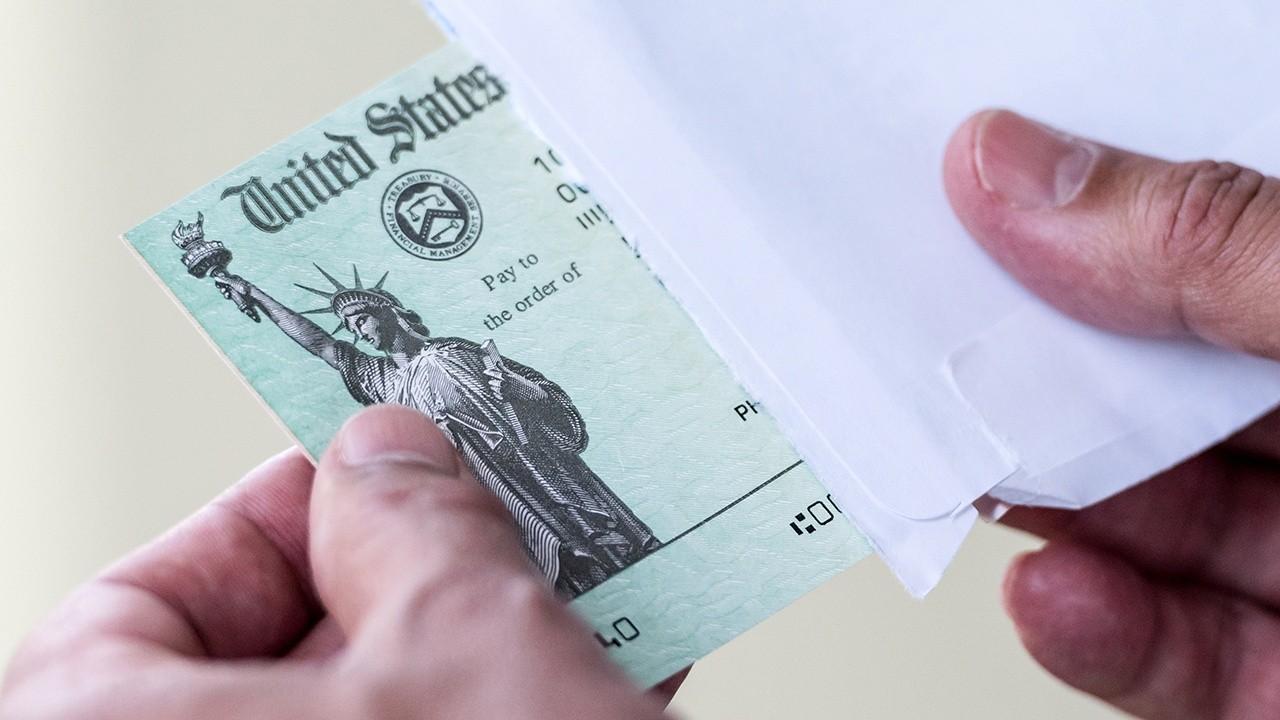How would a second stimulus check affect the economy?
Cash payments would likely boost consumer spending and prevent a rise in poverty, according to studies
After months of painstaking negotiations, Congress on Monday passed a $900 billion coronavirus relief bill that would send a second stimulus check to millions of Americans still reeling from the pandemic — likely boosting consumer spending and preventing a rise in poverty.
12 MILLION AMERICANS FACE LOSS OF UNEMPLOYMENT BENEFITS DAY AFTER CHRISTMAS
The measure includes a $600 cash payment for Americans who earned less than $75,000 in 2019, half the size of the checks sent out earlier this year with the passage of the March CARES Act, as well as $600 per child. If agreed to by President Trump, the payments would be tapered for higher-earners (5% of the amount by which their adjusted gross incomes exceeded the initial threshold) and phased out completely for individuals who earn more than $87,000.
An October study published by the Peter G. Peterson Foundation, a non-partisan group, found the economy saw a "modest boost," thanks to increased spending by less-affluent Americans. Check recipients were more likely to spend the money on necessities such as food, household supplies, utilities, rent, mortgages and credit cards, meaning those sectors saw the biggest benefit.
"Because the payments helped mitigate the loss of employment-based income for many lower- and middle-income households, those families were more likely to use the funds to pay for their expenses as opposed to saving it or using it to pay off existing debt," the study said.
TOP DEMOCRATS SEE $900B COVID RELIEF PACKAGE AS JUST THE BEGINNING
Overall, the study concluded that the payments boosted the nation's economic output by 0.6% in 2020, much smaller than the increase provided by the $600-a-week unemployment benefit and the Paycheck Protection Protection Program.
A separate study published by the National Bureau of Economic Research found that households responded rapidly once they received the money, with spending increasing by $0.25 to $0.40 per dollar of stimulus during the first weeks.

A shopper steps out of a department store, Tuesday, Oct. 27, 2020, in Boston. (AP Photo/Steven Senne)
Spending was higher among households with lower incomes, bigger drops in income and lower levels of liquidity, according to the study, "highlighting the importance of targeting."
"Liquidity plays the most important role, with no significant spending response for households with large checking account balances," the study said.
12 MILLION AMERICANS FACE LOSS OF UNEMPLOYMENT BENEFITS DAY AFTER CHRISTMAS
An earlier analysis from the Center on Poverty and Social Policy at Columbia University showed that without the passage of the $2.2 trillion CARES Act, the one measure of the nation's poverty level would have surged to 16.3 percent from 12.8 percent pre-crisis. During the 2008 financial crisis, the poverty level peaked around 16 percent, according to the U.S. Census Bureau.
But the massive government response to the outbreak of the virus and subsequent economic lockdown helped the poverty rate to remain mostly unchanged at 12.7 percent, the researchers said.
Trump Tuesday night demanded that Congress increase the size of the stimulus checks to $2,000, calling the $600 proposal "ridiculously low" and threatening to torpedo the relief deal.
CLICK HERE TO READ MORE ON FOX BUSINESS
Democrats are planning to force a vote this week on more than tripling the size of the payment.
"At last, the president has agreed to $2,000," House Speaker Nancy Pelosi wrote on Twitter. "Democrats are ready to bring this to the floor this week by unanimous consent. Let's do it!"
A source told FOX Business that Democrats will attempt to pass a standalone bill for $2,000 direct payments on Thursday, although it's unclear whether it would receive the unanimous consent needed to pass in the House or clear the Republican-controlled Senate.
